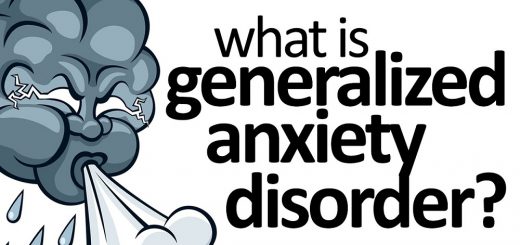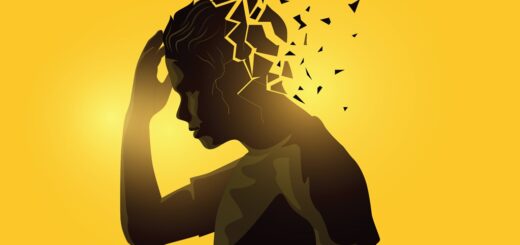What is learned helplessness?
The Learned Helplessness is a type of behavior that occurs when a person is unable to react to painful situations. This person begins to believe they have no control over a situation that is causing physical or psychological harm, and inhibited showing passivity to change things.
Learned Helplessness was discovered in 1965 by psychologist Martin Seligman while studying the behavior of dogs. In the experiment, which was designed to be a variation of the famous experiment of “classical conditioning” of Pavlov? Seligman, using two dogs in a cage, gave them electric shocks for no apparent reason. One of them had the possibility of cutting the current with a stroke of muzzle, but not the other. The first dog remained alert and cut energy, while the latter lived scared, nervous and fell into a depression. His attitude was completely defenseless, even when conditions changed and no longer had the ability to cut power, he did not.
What Seligman discovered was that the dogs had “learned” during the first part of the experiment that clashes occurred randomly; they were inevitable and were not dependent on their own behavior.
This type of behavior pattern as has been shown in humans if they have been exposed to punishment or discomfort that seems random and unavoidable. A sense of helplessness and powerless to improve one’s circumstances is one of the key factors in depression.
Learned Helplessness can lead a person to falsely believe they are more helpless than they really are. This can lead them to make bad decisions, resulting in a worse and a vicious cycle of depression.
This fact has been noted in numerous cases of women affected by domestic violence. As a result of psychological strain caused by the continuous exposure to maltreatment and contempt, victims feel helpless and unable to achieve their life goals, moving to a state of total lack of motivation. The result of a systematic process of violence is a victim who learns to believe you are helpless; you have no control over the situation in which it is located and whatever you do will be useless.
Reformulating the theory…
Later came the reformulation of the theory because of its limitations. This reformulation is called Theory Attribution and explains the helplessness as a consequence of the way in which people argue or explain themselves the events that happen in life, both favorable and adverse. The explanations reflect the optimistic or pessimistic character of a individual, as they may be optimistic or pessimistic explanatory style of explanatory style.
Seligman analyzed these explanations and specified that our optimistic or pessimistic character depend on the interpretation we give to the events that happen to us in life, in the sense of the term we give to the impact of the event, the extent of its effects and degree of responsibility do we lie about ourselves.
So, if our optimistic or pessimistic character determines how we interpret life, can we change our character and thus change our outlook on life?
You may also like to read another article on AnxietyReduction: What is Delusional Disorder: Symptoms and Treatment
Apparently so and many studies speak of the benefits of an optimistic outlook, positive towards life: better health, wellness, relationships healthier couple … worth investing the time and inclination to change the interpretation we give the facts to bring a better quality of life and live fully.
How to be happier and set aside pessimistic thoughts
For this reason, Martin Seligman, explains the “PERMA” models, which are the five pillars to achieve personal satisfaction and happiness:
- P (Positive Emotions – Positive Emotions): It is related to the amount of positive emotions that are experienced throughout the day, those feelings, however small, that make us feel good. People, who think positive, plus enjoy life more and feel much better about themselves and others, achieve superior performance in life. It is important to learn to generate positive and cultivate emotions such as joy, interest, pride, recreation, serenity, hope, gratitude, awe, inspiration and love, as it will help us deal with our negative emotions and we face the difficult event on the day.
- E (Engagement – Engagement): This refers to the level of involvement of a task, activity or situation from a positive attitude. It is therefore important that although the task is not input to our liking, we should try to find a way to turn it into something positive, a situation that can be transformed with the use of our strengths. When this occurs, the individual experiences the famous state of “flow”.
- R (Relationships – Relationships): People are social animals and we need to have good relations to maintain our optimal level of wellness. Whether relationships, friends, family … the question is nurturing and caring relationships with those who provide us with positive feelings and moments.
- M (Meaning – Meaning): It speaks of feeling or belief of belonging to and serving something higher, to find the purpose of life, to go beyond oneself. Believe that the meaning of our existence is useful for something bigger than ourselves, it helps us to feel that we transcend in each of the actions of our daily life. Whether political, religious, family professional level or to save the planet, defining a meaning and give purpose to our projects and occupations, it offers us the opportunity to act coherently and set priorities and values based on which we want to live.
- A (Accomplishment – Achievement): Finally this feature talks about how to recognize our own successes, even if they seem insignificant, to the moments and positive feelings associated with them conscious. Human beings have the need to feel competent and act autonomously. Setting goals, developing our self-control and pursue achievements in our lives, in whatever form, it helps keep us continually growing addition to developing our potential.














